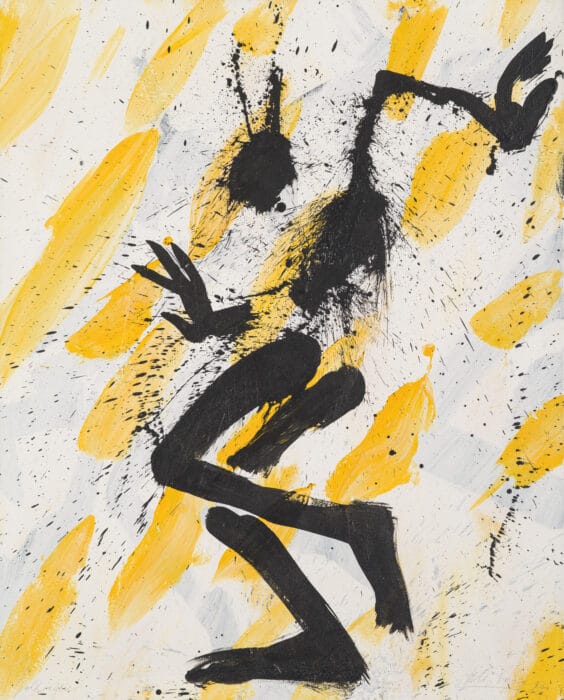Group exhibition with works from the Kunstsammlung der Berliner Volksbank and the Sammlung Haupt »Dreißig Silberlinge – Kunst und Geld« as well as other lenders
17 February – 19 June 2022
In this exhibition, the Stiftung Kunstforum Berliner Volksbank addressed the subject of money in art.
The avenues that artists explore when dealing with money in their art are creative, highly imaginative, and multifaceted. Their approaches range from artistic treatment of banknotes and coins to works of provocation. Some artists examine contradictions between material and ideal value, while others turn to conceptual assessments of social and sociopolitical aspects related to this theme.
Aesthetic means are used to question the “value” of money in our society: How important is money to each one of us? Can you escape your own economic significance? Can art ever be free? To what extent are artists themselves caught in the cogs of securing their existence and affected by increases in value and market power?
A recurring artistic focus is a critique of capitalism, but also the complex relationships between art and commerce. The symbolism of American dollar bills, which are typically associated with the USA as a monetary superpower, has been broken down and recontextualized by artists such as Anne Jud and Andy Warhol.
In the years following the political reunification of Germany, an artist’s group in Berlin’s Prenzlauer Berg district established a new currency called “Knochengeld” (bone money). In this project, some 53 international and Berlin based artists dealt with the profound social change experienced in the early 1990s, brought about by adopting a market economy in the wake of monetary union and reunification.
Following the introduction of the euro around ten years later, artists used shredded DM (Deutsche Mark) notes as materials for the most diverse works. This treatment of now worthless banknotes provided an opportunity to reflect on the value of the material and the fragility of the monetary system.
Some artistic explorations took up the subject of “gold” ‒ for instance, in works by Helge Leiberg, Albrecht Fersch and Michael Müller. Other artists, including Horst Hussel, created imaginary art currencies.


The art market and the values of art as merchandise and speculative assets are also addressed as a central theme. Ultimately, the NFT (non-fungible token) art trend forces us to rethink the significance and uniqueness of digital objects.
The exhibition CASH on the Wall presents paintings, objects, sculptures, prints, collages, photographs, installations and videos. The exhibits are from the Kunstsammlung der Berliner Volksbank and the Sammlung Haupt »Dreißig Silberlinge – Kunst und Geld«, as well as other lenders.
Artists whose works are on view include: Katharina Arndt, Joseph Beuys, Bewegung NURR, Victor Bonato, Dadara, Annett Deppe, WP Eberhard Eggers, Thomas Eller, Elmgreen & Dragset, Albrecht Fersch, Ueli Fuchser, Hannah Heer, Markus Huemer, Uta Hünniger, Horst Hussel, Robert Jelinek, Anne Jud, Vollrad Kutscher, Alicja Kwade, Christin Lahr, Helge Leiberg, Via Lewandowsky, Lies Maculan, Laurent Mignonneau, Lee Mingwei, Michael Müller, Roland Nicolaus, Wolfgang Nieblich, Ingrid Pitzer, Anahita Razmi, Werner Schmiedel, Michael Schoenholtz, Reiner Schwarz, Justine Smith, Christa Sommerer, Gerd Sonntag, Daniel Spoerri, Klaus Staeck, Hans Ticha, Timm Ulrichs, Philipp Valenta, Petrus Wandrey, Andy Warhol, Caroline Weihrauch, Vadim Zakharov.